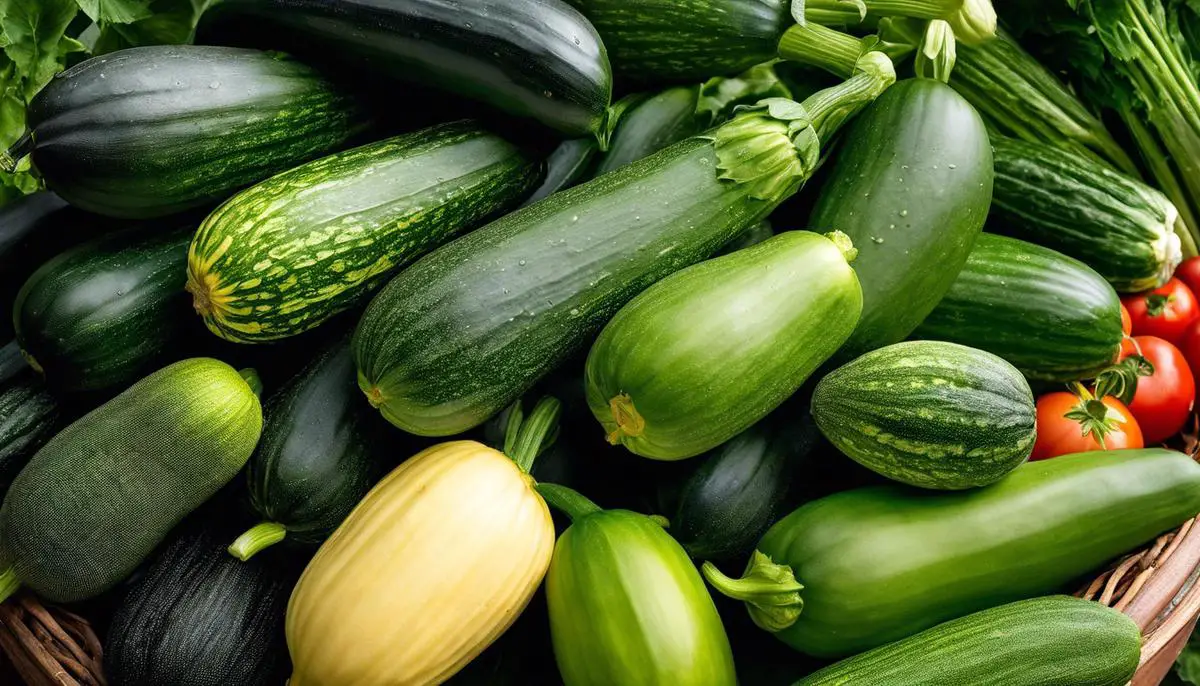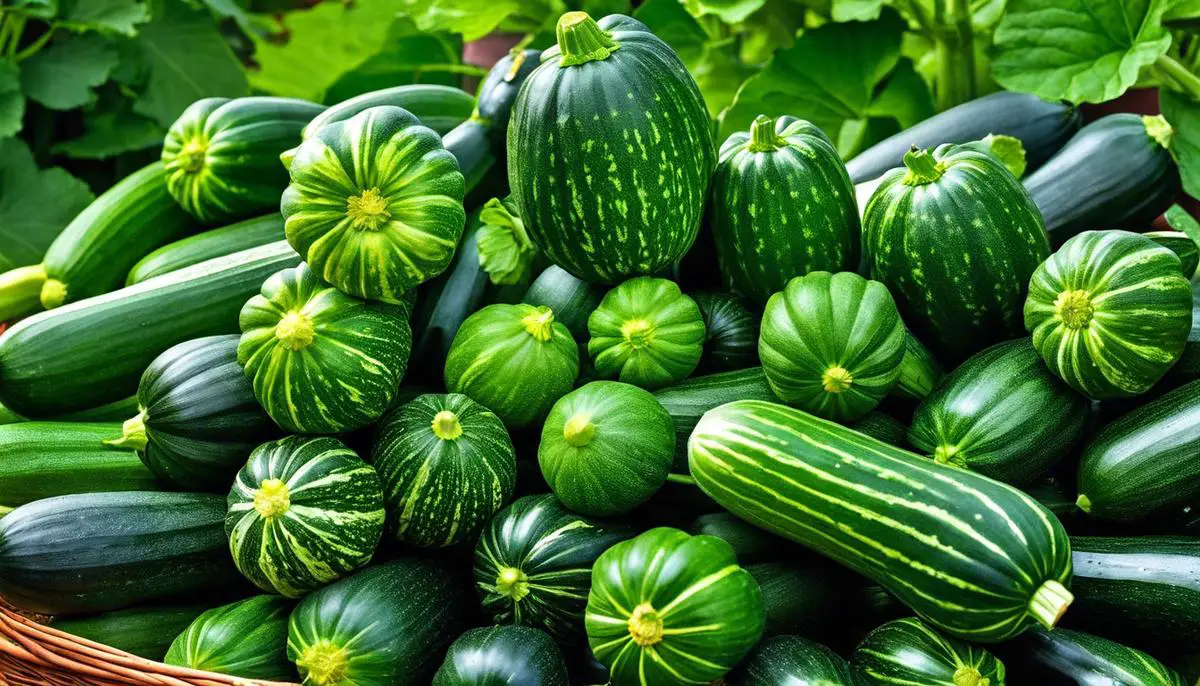Gardening enthusiasts often seek the rewarding experience of harvesting their own crops, and growing zucchini is a fantastic venture for both novices and seasoned gardeners alike. This versatile vegetable thrives with attentive care, and starting on the right foot is key to a bountiful harvest. The foundation of a fruitful zucchini plant lies in its early stages, where selecting the perfect soil and location sets the stage for success. With the right balance of well-drained, nutrient-rich soil and abundant sunlight, these plants can flourish into a staple source of fresh produce for any home garden. Let’s delve into the essential steps that pave the path to growing zucchini, from precise planting techniques and spacing to the intricacies of watering regimens and timely fertilization.
Choosing the Right Soil and Location
Title: The Secrets to Growing Plentiful Zucchinis
Reader Poll: What online courses would interest you?
Ah, zucchini – the versatile veggie that can be grilled, sautéed, spiraled into noodles, or even sweetened into a loaf. For fellow enthusiasts looking to cultivate a bountiful harvest, understanding the foundations of soil conditions and location is key. Here’s a straight-to-the-point guide packed with practical advice to help gardeners grow the most fantastic zucchinis ever.
First things first: location. Zucchinis prosper with plenty of sunshine, so plot a garden space that bathes in at least 6 to 8 hours of direct sunlight daily. They’re a bit like sunbathers, loving all that warm light to grow strong and healthy. Pick a spot that’s well-drained and sheltered from strong winds that can damage leaves and snap stems.
Moving onto soil conditions – think rich, fertile, and well-drained. Zucchini plants are heavy feeders and will reward you with plenty of produce if they have the nutrients they need. Mix in a generous amount of compost or well-rotted manure before planting to create a nutrient-rich environment. The soil should be neutral to slightly acidic, with a pH level around 6.0 to 7.5.
Subscribe to our newsletter!
It’s important to avoid soggy feet, so if the natural soil structure isn’t great at draining, consider raising the beds. Raised beds not only improve drainage but also warm up quicker in the spring, giving those zucchini seeds a cozy start.
The soil temperature is pretty critical, too. For those eager seeds to germinate, the soil should be at least 70°F, which typically means waiting until a couple of weeks after the last frost when the ground has had a chance to warm up.
As for the type of soil, loamy is the dream. It holds moisture yet drains well, a perfect balance for zucchinis that don’t like extremes when it comes to their watering needs. If the soil is too dense, try amending it with sand or organic material to improve the texture and aeration.
Watering is a balancing act. Zucchinis love moisture but can’t stand waterlogged roots. A deep watering once a week should suffice, but during peak summer days, keeping an eye out for wilting is a smart move. Mulching around the plants will help retain that essential moisture while keeping the weeds at bay, a double-win for less garden maintenance.
Spacing is equally essential. These plants aren’t exactly space-savers and can spread out quite a bit. Aim to plant zucchini seeds or seedlings about 36 inches apart. This allows ample room for growth and air circulation, which helps prevent fungal diseases like powdery mildew.
In a nutshell, zucchini plants thrive when basking in full sun, nestled in nutrient-rich, well-drained soil, and given enough space to sprawl out. Tailoring the garden to meet these conditions can be a game-changer, setting the stage for a season-long supply of this beloved green squash. So grab that gardening gear, prep the perfect patch, and get ready to enjoy a cornucopia of zucchinis that would make any hobby gardener proud.

Planting and Spacing
When it comes to propagating those zucchini seeds or seedlings, with some careful attention to detail, anyone can prepare for a bountiful harvest. Here’s how to get the little sprouts off to the best possible start.
Planting Zucchini Seeds:
- Timing: Plant zucchini seeds in the ground when the soil has warmed up to at least 70°F. This is typically a couple of weeks after the last frost in spring.
- Sowing Depth: Plant seeds about an inch deep directly into the soil. Precision isn’t crucial, but don’t go much deeper to ensure they can easily germinate.
- Spacing Out: Space the seeds about 2-3 feet apart in rows. If you’re opting for hills (a traditional method where multiple seeds are planted close together), space the hills about 4 feet apart.
- Hill Method: For the hill method, place about 2-3 seeds together in each hill. After germination, thin out the weaker seedlings, leaving the strongest plant to grow.
- Water Wisely: Right after sowing, water the area gently but thoroughly to ensure moisture reaches the depth of the seeds.
Transplanting Zucchini Seedlings:
- Acclimate Seedlings: If seedlings were started indoors, they need to be hardened off. Introduce them to outdoor conditions gradually over the span of a week.
- Transplant Timing: Once the soil is warm and seedlings have been hardened off, it’s safe to transplant them outdoors.
- Planting Depth: Dig holes just big enough to accommodate the root ball of your zucchini seedlings. Plant them at the same depth they were growing in their containers; burying them too deep can choke the young plants.
- Spacing Seedlings: Space zucchini seedlings 2-3 feet apart, similar to the seed sowing distance. If you’re working with hills, plant 2-3 seedlings close together in the center of the hill, again thinning them later to the strongest one.
Aftercare:
- Regular Watering: Keep the soil evenly moist, especially as the plants grow larger. The idea is to water deeply yet infrequently to encourage strong root development.
- Monitoring for Pests: Be vigilant and check for common zucchini pests like squash bugs and vine borers, which can quickly derail a promising zucchini patch.
- Support: Although not climbers, large zucchini plants can benefit from the gentle support of a stake or trellis to keep fruit off the ground.
With these steps, the zucchini plants are on track to thrive, ushering in a season of lush green foliage and, fingers crossed, a plentiful harvest of fresh, homegrown zucchinis. Just one final tip – be ready with some recipes, because once they start cropping, there’ll be zucchinis aplenty. Happy gardening!

Watering and Fertilizing
When it comes to cultivating thriving zucchini plants, water and nutrients are like the plant’s daily bread—it’s all about giving them what they need, when they need it. Getting the watering and fertilizing right is key to growing zucchinis that are the envy of the neighborhood.
Firstly, understanding the water rhythms is critical. Zucchinis are thirsty veggies with deep roots and their love for water comes with a straightforward principle: deep, less frequent watering is usually better compared to frequent, shallow sprinklings. Deep watering encourages the roots to go further down into the soil, making the plants more drought-resistant and healthy. Aim for at least an inch of water per week, but always be ready to adjust depending on the weather. A good way to check if plants need water is the finger test—poke a finger into the soil about two inches deep; if it feels dry, it’s time to water.
The best time to water is early morning or late afternoon, avoiding the hottest parts of the day to reduce evaporation losses. Drip irrigation or soaker hoses are champions in delivering water directly to the roots and minimizing moisture on foliage, which can lead to mildew.
For the growing zucchini, the adage “feed the soil, not the plant” holds true. Fertilizing begins with working in a balanced, all-purpose fertilizer into the soil at planting time; typically, a granular formula with equal parts nitrogen, phosphorus, and potassium does the trick. However, once the plants start to develop and flowers emerge, they can benefit from a high-potassium liquid fertilizer to boost fruit production. This can be applied every two weeks.
Steer clear of over-fertilizing, which could lead to lush foliage at the expense of fruit. It’s quite the balancing act—too little, and the plants won’t thrive; too much, and they’ll have an excess of leaves with too few zucchinis. Also, always ensure that the soil is moist before applying liquid fertilizer to avoid root burn.
Lastly, when zucchinis start to grow, slowing down on the nitrogen-rich fertilizers is wise since the focus is on fruiting, not foliage. At this stage, consider switching to a phosphorus-rich fertilizer, promoting not only healthy fruiting but also robust root development.
It’s in these serene moments—tending to the zucchinis, watering and nurturing them—that the fruits of labor truly emerge in the form of fresh, succulent zucchinis ready for the kitchen. Bon appétit, and here’s to the fruits—or rather, the vegetables—of careful, loving care in the garden!

Embracing the practices outlined above offers a garden abundant with zucchini, a testament to the care and dedication invested into their cultivation. Through mindful gardening, paying close attention to the individual needs of soil, sun exposure, watering, and fertilizing, even a novice can transform their garden into a zucchini wonderland. Remember that each plant tells its own story through its growth – by providing them with the essentials, you can ensure that this story is one of vibrancy and productivity. Embark on your zucchini growing journey with confidence, knowing that these tips are the seeds of your future gardening success.

